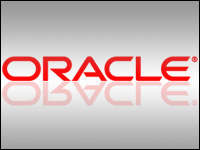
Let’s be frank: The main reason Oracle’s latest quarterly revenues nosedived was backlash from users fed up with two years of price hikes on products, technical support, maintenance and licensing contracts — and not because of a correction in the overall server hardware market.
Yes, it’s true that the latest quarterly financials of other high-technology bellwethers like HP, Intel and Texas Instruments also disappointed. [*Correction – Jan. 6 2012]
And yes, it’s true that this has spiked fears of widespread weakening in the tech sector.
And yes, it’s true that corporate spending remains cautious and circumspect due to the ongoing economic volatility. By all accounts, corporate spending on server hardware, new software applications and networking gear will be flat to modest during 2012. Translation: Companies will be cautious, but they will to continue to spend and invest in order to remain competitive. And that means upgrading their servers and server-based applications to support increased virtualization and storage initiatives and new cloud deployments.
Meanwhile, third-quarter 2011 server revenue statistics released by IDC show that “factory revenue in the worldwide server market increased 4.2 percent year over year to (US)$12.7 billion in the third quarter of 2011.” While server demand was “moderating,” according to IDC, Oracle rivals like IBM were thriving.
IBM and HP jointly held the No. 1 position in the worldwide server market with 29.8 percent and 29.8 percent factory revenue share respectively for 3Q11, a statistical tie. IBM experienced 3.5 percent year-over-year growth in factory revenue with particular strength in Power Systems demand.
Oracle remained a distant fourth in the worldwide server market, with a year-over-year revenue decline of 3.2 percent in the third quarter. Oracle’s share of the server market likewise declined. It held 6 percent market share in Q3 2011, down from 6.5 percent in Q3 2010, according to IDC.
For its 2012 second fiscal quarter, Oracle posted net income of $2.2 billion on sales of $8.8 billion. Oracle’s earnings rose by 22 percent over the prior fiscal quarter while sales increased by 2 percent. However the big story was the 7.4 percent decline in Oracle’s hardware sales from the previous quarter and a contraction of 14 percent year-over-year (YoY) on sales of $953 million.
However, sales of Oracle’s core competency software products — including the Oracle DB, the Fusion suite of applications and the Solaris operating system — were also soft. New software license sales, a staple of Oracle’s bread and butter sales, grew by a paltry 2 percent instead of the double digits Wall Street had anticipated. Revenue from software license updates (which boast profit margins of more than 90 percent) rose 9 percent to $4 billion.
Oracle CFO Safra Catz attributed the deceleration in new revenues to “an increase in last-minute additional approvals required for previously scheduled and expected deals.” Oracle CEO Larry Ellison similarly attributed the sluggish hardware sales to deals being delayed as customers decided to wait to purchase the next generation of SPARC T4 processors instead of buying the current T3 CPUs.
Oracle executives also spent much of a significant portion the earnings conference call extolling the virtues of the Oracle Exadata database appliance. At present, Exadata sales represent just 5 percent of Oracle’s total revenue.
User Unhappiness
A closer examination however, reveals more disturbing reasons for Oracle’s second quarter results. Oracle customers — especially the former Sun Microsystems SPARC hardware, Solaris OS and MySQL open source database users — are fed up with price hikes on products, licensing and maintenance contracts.
For the last two years, Oracle initiated changes that benefited Oracle but not its customers. Most, if not all, of the changes raise users’ upfront acquisition and ongoing maintenance costs significantly. For example, Oracle now requires customers to purchase support on each piece of hardware. Additionally, any organization that lets its support contracts lapse will be required to pay a premium equal to 150 percent of its most recent support contract to achieve compliance.
Another change that has riled customers is that support contracts begin from the time Oracle or its manufacturing partners ship the products. Prior to this, support contracts for many customers, especially large enterprises, only took effect when the server was deployed. Now, Oracle customers pay even if the unit is sitting dormant in a warehouse.
Oracle is certainly not alone in raising prices. Many vendors have hiked tags and passed along higher costs to customers. However, Oracle’s price increases might be easier for customers to take if it were providing a high level of customer service and support. But that hasn’t been the case.
Various news articles and polls have chronicled a rising tide of user backlash against Oracle over pricing, technical service and support, and a perceived lack of a definitive product road map and strategy for the Oracle SPARC servers and MySQL open source database:
The Gabriel Consulting Group polled 450 enterprise IT users, an overwhelming 94 percent of which were Oracle customers. When asked whether any of Oracle’s recent actions had changed their opinion of the company, a roughly two-thirds (65 percent) majority said their opinions had changed for the worse.
Gabriel Consulting also disclosed that among survey participants who responded “not sure” or “not a negative change” some respondents used the essay response box to explain that their opinion of Oracle hadn’t changed was because it was already negative.
Another Gabriel survey found that 85 percent of customers believed that Oracle would “do everything possible to persuade/force customers onto all-Oracle solutions.”
Information Technology Intelligence Consulting’s October 2011 survey of more than 450 respondents found that Oracle products received the lowest ratings for quality of service and support of any of the major vendors. Half — 50 percent of ITIC survey participants — said that Oracle hardware reliability had worsened over the last two years, and 18 percent of Oracle customers gave the company “poor” and “unsatisfactory” ratings for technical service, support, and product warranties on server hardware.
Only 1 percent said Oracle support had “improved significantly.” Only 32 percent of respondents gave Oracle an “excellent” or “very good” rating for product performance, service and support. This is in sharp contrast to the 85 percent of survey participants who gave rivals IBM (85 percent), HP (76 percent) and Dell (70 percent) “excellent” and “very good” marks for their hardware product performance, service and support.
In Oracle’s core competency, databases, Microsoft’s SQL Server scored significantly higher satisfaction ratings among survey respondents. More than 80 percent of participants gave Microsoft SQL Server “excellent” or “very good” ratings, compared to the 43 percent that gave the Oracle DB an “excellent” or “very good” rating.
Computer Economics surveyed 109 users in late 2010 for its “Go-Forward Strategies for Oracle Application Customers.” The results indicate 42 percent of respondents were unhappy with the quality of Oracle support, while a 58 percent majority were dissatisfied with the cost of Oracle support.
The amazing thing about Oracle’s most recent financial results is that it took so long for customer ire to surface and take a big bite out of Oracle’s bottom line. Anecdotal user responses to ITIC’s October 2011 “Global Server Hardware and Database Reliability” poll laid bare the extent of customers’ anger.
“Our Sun support has become even more abysmal since crazy Larry purchased them — hard to believe,” said a network administrator at a large healthcare organization with 250 servers.
An IT Manager at a midsized manufacturing firm was equally distressed by Oracle’s moves since acquiring Sun: “Since Oracle bought-out Sun, the future of Solaris is extremely dim if not already gone. IT departments that have invested heavily in SPARC/Solaris servers are going to have significant issues once it is no longer supported. Inevitably, this will lead to server reliability issues as the deprecated Sun hardware ages,” the IT manager said.
Many organizations, including his own, had “dropped a small fortune to be able to run Solaris on its native RISC platform,” he added — and in so doing, they expected continuing enhancements and improvements to the product line.
“So much for that,” the IT manager said. “Companies will have a very difficult time being able to part with these premium-priced boat anchors when the time comes, and it will be sooner than later.”
Many of the ITIC survey respondents said they were already moving from the Oracle SPARC and Solaris platforms. This is no easy task since Oracle (Sun) servers run their main business applications. Now these companies and their developers face the very real possibility of having to port massive amounts of code to another database, server OS and CPU architecture.
“This will, no doubt, be outrageously expensive, if not downright impossible to afford with companies already trimming IT departments down to the absolute barest of essentials,” the IT manager said.
The economic climate is challenging and volatile. If Oracle wants to reverse its declining hardware fortunes and shore up its sagging licensing, maintenance and support revenues, then it will have to offer customers better deals, terms and conditions. And it will have to move quickly.
Rivals like IBM and HP are focused on getting Oracle customers to defect — and with good results. IBM’s Power Systems group scored 250 competitive displacements in the 2011 calendar third quarter and 750 displacements year-to-date. Those new customers netted IBM $740 million in revenue for 2011 through Q3 and helped boost Power Systems sales by 15 percent.
Are you listening Oracle?
*ECT News Network editor’s note – Jan. 6, 2012: Our original published version of this column mistakenly included SAP among the high-technology bellwethers whose financials disappointed. In fact, SAP reported strong revenue growth in its 2011 third quarter ending Sept. 30.



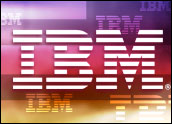
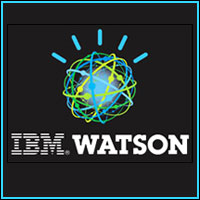
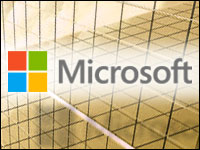
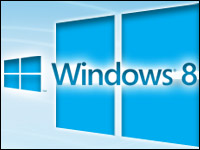
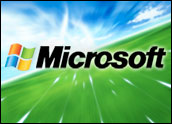
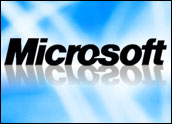

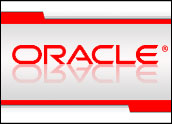












































New software license sales, a staple of Oracle’s bread and butter sales, grew by a paltry 2 percent instead of the double digits Wall Street had anticipated."
The problem with Wall Street is that if they get it wrong the company gets the blame …. this applies to any company, not just Oracle.
"Revenue from software license updates (which boast profit margins of more than 90 percent) rose 9 percent to $4 billion."
…………. and this is Oracle’s "bread and butter". Oracle still have a solid profit base.
They certainly have problems but given their position in the financial market I have a problem seeing this as much of a "spiral".
A few points–the primary point being that a one-quarter earnings miss hardly constitute Oracle entering a downward spiral. More like a hitting a speed-bump. Second point–you raved over the $740M that IBM added from new customers during the first 3 quarters of 2011 yet downplayed the revenues attached to Oracles Exadata. However, assuming that your number is correct regarding exadata being just 5% of total sales, that still constitues approximately $1.4B over the prior 9-month period. Third point–at the time of the last report (quarter ended November 30, 2011), Oracle had only been in the hardware business 22 months (the Sun acquisition being finalized at the end of January 2010). That is simply not enough time to make any type of final judgement about that particular business segment or to determine any meaningful trends–including downward spirals. I do not believe that one poor quarter–especially when it was compared against the same year-ago period which saw 47% growth–constitutes an overall business pattern or a time to panic–especially in light of the macroeconomic backdrop. That said, customer satisfaction is important as are customer defections. Assuming that growing dissatisfaction causing lost business is accurate, it is something Oracle needs to address if it intends to remain relevant in its markets–which I suspect it will find a way to do–even if that means more large transformational acquisitions. JMO.
I think Oracle isn’t out of the game, but the new year is a perfect time to make goals to address these growing customer concerns. It was definitely not the best quarter for many of the high tech giants, so hopefully 2012 will bring a better financial climate.
Sarah
Mosaic Technology